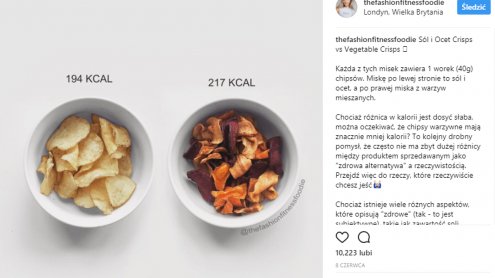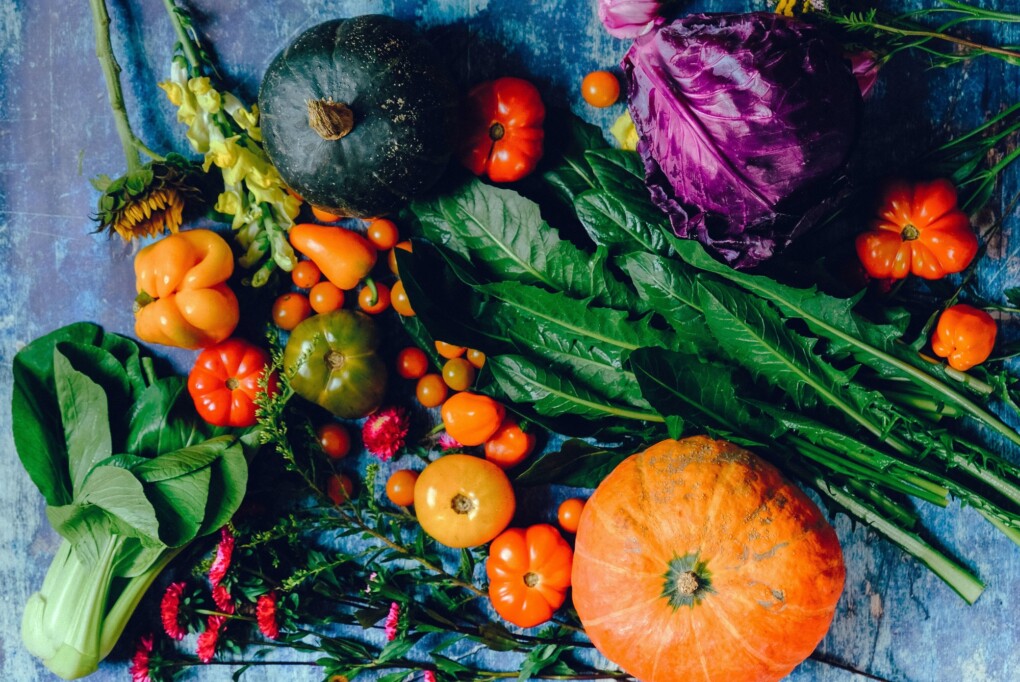Powszechnie uważa się, że w trakcie odchudzania najważniejsza jest liczba kalorii, którą spożywamy. Dlatego też ogromną popularnością cieszą się wszelkie diety typu „1000 kcal” czy „1500 kcal”. Rzadko jednak zastanawiamy się, na jakich produktach są one oparte i jakie składniki odżywcze zawierają. To duży błąd.
Lucy Mountain, amerykańska blogerka i miłośniczka świadomego odżywiania, postanowiła pokazać, co tak naprawdę trafia do naszego żołądka. Kobieta porównuje wartości kaloryczne popularnych dań i przekąsek, by uzmysłowić swoim fanom, że nie kalorie się liczą, a jakość i ilość, spożywanych produktów. Można przecież prowadzić dietę, zawierającą 1000 kalorii, ale złożoną wyłącznie z chipsów i czekolady. Jaki to problem? Cała sztuka polega na tym, by odżywiać się zdrowo.
W obu miseczkach znajduje się tyle samo produktu – 40 g solonych chipsów i 40 g warzywnych chipsów. Pierwsze zawierają 94 kalorie, drugie 217 kalorii. Które powinnaś wybrać? Te, które mają mniej kalorii? Nie. W tym przypadku lepiej postawić na drugą opcję – zawiera mniej soli, utwardzaczy i konserwantów, a więcej składników odżywczych. Twój organizm z pewnością lepiej spożytkuje kalorie, pochodzące z chipsów warzywnych.
Te dwie sałatki z awokado wyglądają niemal identycznie, prawda? Dlaczego więc ich wartość kaloryczna tak bardzo się różni? Sekret tkwi w szczegółach, niewidocznych na pierwszy rzut oka. W sałatce po lewej znajdziemy ser leerdammer (light), pokrojony tost, domowy dressing z jogurtu i musztardy oraz uprażony owies, natomiast w tej z prawej strony mamy parmezan, grzanki, gotowy dressing Cesar i pestki słonecznika. Co więcej, wszystkich składników jest tyle samo.
Na tych talerzykach znajdują się kromki tego samego pieczywa, posmarowane dokładnie takim samym masłem orzechowym. Skąd różnica? Na posmarowanie pierwszej blogerka użyła 15 g masła, na drugiej znajduje się natomiast 40 g masła orzechowego. To porównanie ma uzmysłowić, że ważna jest także porcja, którą spożywamy. Bo jak wiadomo, wszystko jest dla ludzi. Byle w rozsądnych ilościach.
Źródło: Instagram









